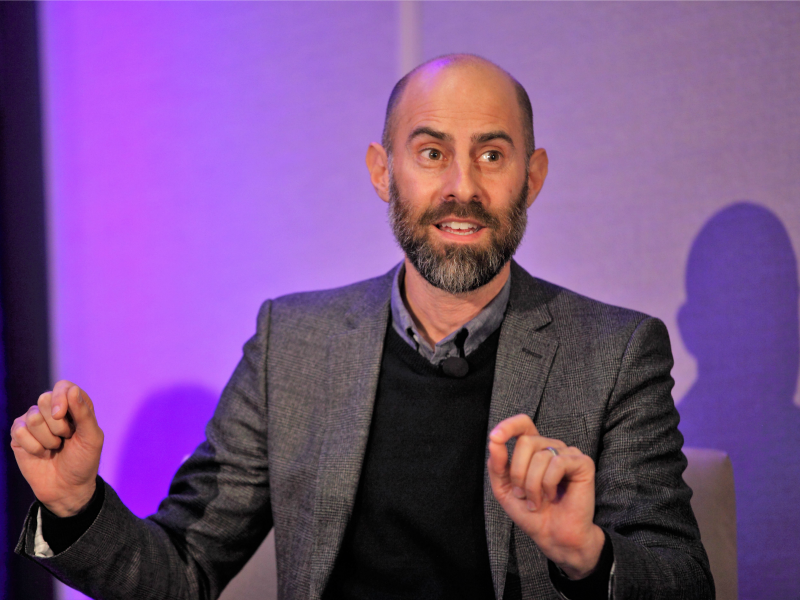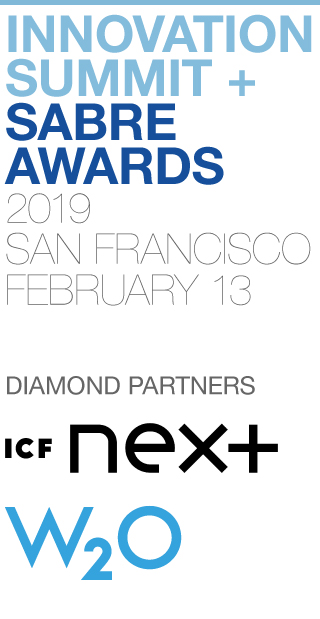Paul Holmes 14 Feb 2019 // 7:16AM GMT

SAN FRANCISCO—Talking about complex innovation to an audience that doesn’t care about new technology can be worse than saying nothing at all, attendees at our San Francisco IN2Summit were told today. At the same time, communicating the potential of innovation and all the things it might ultimately enable is one of the great challenges facing communicators.
Those were just a couple of the perspectives that formed the basis for a discussion during the “Breakthroughs in Tech: From Creation to Communication” panel, sponsored by W2O Group and moderated by W2O chief marketing officer Aaron Strout.
Strout introduced the discussion with some context on innovation and disruption: 80% of executives think they are at risk of being disrupted by innovation, according to McKinsey; at the same time, more than 90% of new products and innovations fail; and Boston Consulting Group says one of the top six obstacles to successful innovation is marketing and communications.
Leslie Campisi, chief marketing officer for venture investment firm Anthemis Group, helped to set the tone by talking about how the context for innovation communications has changed. “I have spent my whole career thinking about how to communicate innovation,” she said. “Twenty years ago, media shared the enthusiasm of tech entrepreneurs. They wanted them to win. Even 10 years after that, the optimism and idealism was still there, but the marketplace for coverage was much more crowded. You could get people to review an op.
“Today there’s a completely different meta-narrative: there’s a high degree of scepticism. We all need to recognize that you need good answers about your data and security policies, for example. It’s a much more serious conversation I need to have with our portfolio companies about what it means to be a good company.”
Mary Stutts, former head of corporate communications, Stanford Health Care (now in charge of diversity, inclusion and health) previously worked at Comcast, and discussed how innovation is central to both companies—and the greater degree of creativity needed to communicate innovation in the healthcare space.
“Most of the companies where I have worked have been focused on maximizing technology to increase access or utilization or just for customer acquisition…. You look at Stanford where we are doing to same thing in terms of increasing access and utilization, we are finding the millennials don’t want to get healthcare unless they are really, really sick and then they show up at the emergency room.
“We put onsite clinics at Google and Facebook and Apple. We created doctors on demand and teledocs to help people access healthcare. We targeted ethnic media and held roundtables and salon events. We did sessions with mommy bloggers. We are constantly having to brainstorm how we can reach these groups beyond just an ad campaign.”
Also coming from the healthcare perspective, Jason Alderman, chief communications officer at Medicare Advantage insurer Clover Health, warned about the wrong way to communicate innovation: “Most of our customers are over 65 years old and we are using data and analytics to predict a month ahead of time when people are about to go into the hospital, and where to possibly intervene to help them avoid that. That’s not exciting to our customers, so it’s not compelling for us to talk about it. We talk about it when we’re hiring engineers or data scientists, but the way we talk about it to customers is really limited.
“To talk about complex things to the wrong audience is worse than nothing at all, because it suggests to them that your priorities are not their priorities.”
But Gabriel Stricker (pictured), vice president of communications at Niantic, the augmented reality company best known for Pokemon Go, countered: “My experience is that the underlying technology can sometimes be a lot more fascinating than your first impression of it. When I worked at Twitter, the first exposure—this is something where you can tell people what you had for breakfast—is a lot different from the ultimate experience, which is that this technology has helped overthrown despots.
“The same is true of augmented reality. For me, the challenge is how do you educate someone about what a new technology really means and what it will enable, even if the first exposure to it is underwhelming. And that’s where communications can really make a difference.”
In conclusion, Campisi added, “One of the things that is incredibly value is that the company leadership and the engineers responsible for all this innovation and the communicators responsible for telling people about it are all taking to each other, and that there is a diverse group of people in the room. And those people can make sure there is not a giant hole in the middle of the strategy where purpose or values should be, because they are central to communicating the benefits of innovation.”


































.jpg)



















